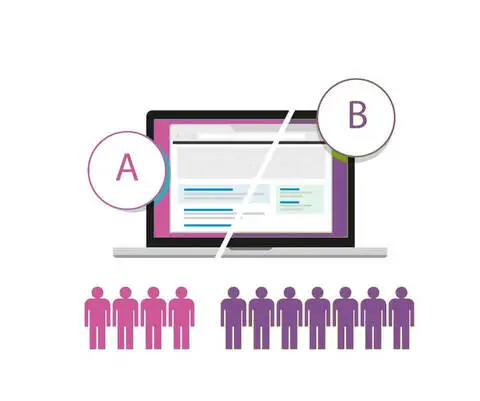Business Blogging 101: How to Write Your First Blog
9 MIN READ

Remember your first time?
Awkward, clumsy, confusing. Just a few ways to describe how most of us feel looking back on our first kiss, first day of middle school, first speech, first job.
First blogs can be just as cringeworthy. It’s not easy to write a well-organized, informative, and effective blog. But fear not first-time-bloggers, because by following a few simple guidelines and best practices, you’ll be able bypass the awkward stage of beginner blogging and go straight to business blogging brilliance.
The Blog Outline
We all avoid that relative or coworker that takes 15 minutes to tell an awful, long-winded, and disorganized story about people you don’t know and things you don’t care about. Unfortunately, many new bloggers write in this same fashion.
A blog’s success is dependent on its ability to provide well-organized information. A blog that strays too far from the headline or fails to deliver information promised in the introduction will immediately turn away readers and potential customers.
Creating a blog outline ensures that you stay on topic and don’t stray from the information your readers are expecting. Take a few minutes to organize your thoughts into a simple outline. This will help you write more efficiently and tell a well-structured and cohesive story.
As you develop your outline, make sure that your key takeaways ladder up to what is promised in the introduction and headline.
Here’s the simple outline that I use for my blog posts:
- Title
- Introduction
- Hot start
- Quickly explain the problem you are solving
- Summarize the main takeaways that readers will learn
- Takeaway #1
- Intro sentence
- Supporting stats or information
- Significance
- Example
- Takeaway #2
- Intro sentence
- Supporting stats or information
- Significance
- Example
- Takeaway #3
- Intro sentence
- Supporting stats or information
- Significance
- Example
- Conclusion
- Summarize what readers just learned
- Include a strong call to action
And here’s how I used this outline for the post that you are reading right now:
- Title: Business Blogging 101: How to Write Your First Blog
- Introduction
- Remember your first time?
- How to write the first blog without making the typical mistakes
- Tips to compose impactful, organized, and informative blog
- Takeaway #1: The Outline
- The cringey relative or coworker
- Make sure everything ladders up to the headline
- Helps story stay on track, topic, cohesive
- Example: Share outline template and a completed outline for this blog post
- Takeaway #2: The Headline
- Two versions of the same headline
- 60-70 characters, types of headlines that perform best
- Hook audience in
- Examples of the different types of headlines
- Takeaway #3: The Introduction
- Goldfish stat
- Explain the hot start
- This is how you hook readers in
- Use the example from this blog
- Takeaway #4: The Copy
- Length does matter
- 1,200 - 2,500 words is ideal
- Helpful for Google and blog frequency
- Gardening vs Finance blog lengths
- Takeaway #5: The Conclusion
- The five paragraph essay
- So what and what’s next
- Strong CTA
- Example → go into the conclusion of this blog
- Conclusion
- Summarize what readers just learned with check marks
- If they need help with creating blog content, use an agency.
The Blog Headline
Which blog headline is more compelling to you?
Option 1: Business Blogging
Option 2: Business Blogging 101: How to Write Your First Blog
Option 2 is far more compelling and interesting than Option 1. Headlines written as lessons perform well with readers as they immediately offer something of educational value. Here’s some other best practices and examples of strong headlines to help get you started:
Your blog headline should be between 50 and 70 characters long. Anything longer than 70 characters will get cut off in search engine results. Headlines written as questions, lists, or lessons perform best.
Questions
Want to build a firepit in your backyard? Read this guide first.
Think you know everything about cabbage? Think again.
Lists
10 Foods You Didn’t Know Paired with Wine
8 Secrets Your Accountant Doesn’t Want You to Know
Lessons
How to Rig Up a Fishing Pole to Catch Trout
Create the Perfect Flower Bouquet: A Beginners Guide
If you’re having writer's block or need inspiration, you can always plug your topic into SEOPressor’s Blog Title Generator.
A great (and free!) resource to test the strength of your blog headline can be found using CoSchedule’s Headline Analyzer tool. Keep revising your headline until your score is close to or above 70. The score for this blog’s title is 68.
The Blog Introduction
Humans now have attention spans shorter than that of a goldfish, according to Time.
You have eight seconds to capture the attention of your audience (nine seconds for goldfish), so your blog intro needs a “hot start” - an interesting statistic, story, or problem that sparks interest and immediately hooks your readers. Myself and blog readers around the world beg of you to please, never start a blog with “This blog is about…”
Your hot start should be bold, witty, and avant-garde. Be fearless my business blogging friends!
The hot start is usually the last thing I add to my outline. I like to fill in all the other details and organize my thoughts to see how the story unfolds first, then find the perfect opening to tell the story.
Beyond being bold, your introduction needs to also address your audience’s problem and how reading your blog will help solve that problem. As you saw in the outline, I set up blog introductions like this:
- Hot start
- Quickly explain the problem you are solving
- Summarize the takeaways that readers will learn
Blogs aren’t five paragraph college essays; you don’t need to state a thesis and the supporting facts in your introductory paragraph. Do give a brief summary of what readers can expect to learn from your blog. For example, I kept summary very high level and didn’t spell out exactly what was in the blog, but readers are still able to understand what they’ll learn from this blog:
First blogs can be just as cringeworthy. It’s not easy to write a well-organized, informative, and effective blog. But fear not first-time-bloggers, because by following a few simple guidelines and best practices, you’ll be able bypass the awkward stage of beginner blogging and go straight to business blogging brilliance.
One last tip for the introduction (and your entire blog) - write in second person. This means using you, your, and yours. Even in a business blog, it’s important to create an emotional and personal connection with your audience. Brian Walker of Copyblogger puts it best, “When it comes to writing engaging content, “you” is the most powerful word in the English language, because people are ultimately interested in fulfilling their own needs. It may sound harsh, but the fact is your readers won’t start to actually care about you at all until you’ve repeatedly offered them exceptional value with your blog.”
The Blog Copy
So length DOES matter...blog length that is. Try to keep your blog length somewhere between 1,200 and 2,500 words. I know, that’s a pretty wide range, I’ll get to those numbers in a minute. Keep in mind that if your blog post is 1,000 words or 3,000 words, that’s just fine. The recommendations on blog length, much like the code in Pirates of the Caribbean, are more guidelines than rules.
Here’s why:
Any type of digital content with more than 1,200 words is considered long-form content by Google. The Gods of Google deem long-form content as more informative and relevant and “rewards” this type of content with higher rankings. This is why you want to aim for 1,200 words in every blog post that you write.
As another incentive to write longer blogs, a Hubspot study showed that blogs with word counts greater than 2,000 received the most organic traffic and backlinks (aka SEO gold).
However, blog length means nothing if your content is garbage. If you create an informative, helpful, and well-written blog that addresses your audience’s pain points in 800 words, leave it be. The worst thing you can do is add “fluff” to a well-written blog to try and hit the 1,200 mark.
On the opposite end of the spectrum, if you write an in-depth and information-rich blog that comes in at 4,000 words, don’t trim the copy.You won’t be penalized by Google for a blog that is too long. The reason I recommend capping a blog at 2,500 words is for the sake of time and posting frequency. To keep up with the recommended 1-2 blog posts per week, it might be easier to create two 2,000 word blog posts than one 4,000 word blog post.
Keep in mind that different audiences prefer different length blogs. You can collect data on your audience by adding heat-mapping tools to your blog or by checking Google Analytics to see how long readers are staying on the blog page. If you notice that they’re not making it through to the end of your blog, you may want to trim the copy down a bit. For example, home and garden blogs average 1,200 words because they’re typically image-heavy and instructional. Financial blogs average 2,100 - 2,500 words because they’re analytical and dive into complex subject matter.
For the record, this blog weighed in at 1914 words.
Conclusion
So back to that five paragraph essay format you used in school. The conclusion was the easiest part of the whole paper, right? You just restated your introduction and supporting points. Boom, conclusion done.
Please don’t do that in your blog.
Just like the introduction, your conclusion is a critical piece of your blog. This is the finale. This is the final episode of the final season. This is 10 seconds left in the fourth quarter. Your reader made it all the way here; don’t disappoint them with a flat ending. Wow readers here and they’ll share your post, subscribe to your blog, and...drumroll please...convert into customers!
While you should briefly summarize your takeaways and what the reader just learned, it’s extremely important that you answer these two questions in your conclusion as well:
So what?
What’s next?
So what? Why should they care about what they just learned?
What’s next? A link to buy your product, download your eBook, start a free trial, schedule a demo - this is where you add in the call to action.
Speaking of conclusions, it’s about that time to wrap up this blog.
Copy followed the outline. Check.
Headline has 51 characters and scored a 68. Check.
Hot start. Check.
Summarized things learned in the conclusion. Check.
1914 words. Check.
See what I just did there? I just summarized what you learned without restarting it in the five paragraph essay format.
You should now be fully locked, loaded, and ready to write a killer first blog for your business.
Remember, like we talked about in Business Blogging 101: What You Need to Know Before Your First Blog, frequency is just as important as form. Don’t spend all this time writing an amazing, insightful and educational blog, then go radio silent. Keep up the regular cadence of posting, ideally two blogs per week, to improve rankings, retain subscribers, grow brand awareness, and establish yourself as a thought-leader in your industry.
If you’re concerned about keeping up with the frequency of blog posts, remember that you can always outsource some or all of your blogging to a marketing agency.
See what I just did there? Strong Call to Action. Check.
Recent Posts

Business Blogging 101: What You Need to Know Before Your First Blog
Did you know that motel is short for motorists’ hotel? Or that car comes from...

SEO for Beginners: How a Search Engine Works
We have a lot of clients that want to learn about SEO, but struggle to find...

Lead Generation for Your Small Business
So you've generated some website visitors. Oh, the potential. But 96% of...
